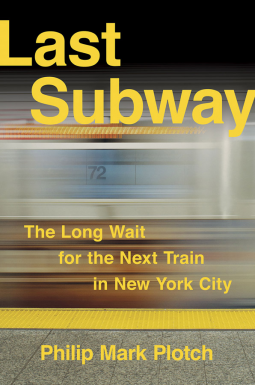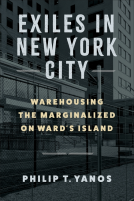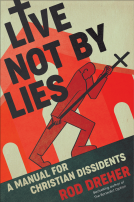
Last Subway
The Long Wait for the Next Train in New York City
by Philip Mark Plotch
This title was previously available on NetGalley and is now archived.
Send NetGalley books directly to your Kindle or Kindle app
1
To read on a Kindle or Kindle app, please add kindle@netgalley.com as an approved email address to receive files in your Amazon account. Click here for step-by-step instructions.
2
Also find your Kindle email address within your Amazon account, and enter it here.
Pub Date Mar 15 2020 | Archive Date Apr 02 2020
Cornell University Press | Three Hills
Talking about this book? Use #LastSubway #NetGalley. More hashtag tips!
Description
Last Subway is the fascinating and dramatic story behind New York City's struggle to build a new subway line under Second Avenue and improve transit services all across the city. With his extraordinary access to powerful players and internal documents, Philip Mark Plotch reveals why the city's subway system, once the best in the world, is now too often unreliable, overcrowded, and uncomfortable. He explains how a series of uninformed and self-serving elected officials have fostered false expectations about the city's ability to adequately maintain and significantly expand its transit system.
Since the 1920s, New Yorkers have been promised a Second Avenue subway. When the first of four planned phases opened on Manhattan's Upper East Side in 2017, subway service improved for tens of thousands of people. Riders have been delighted with the clean, quiet, and spacious new stations. Yet these types of accomplishments will not be repeated unless New Yorkers learn from their century-long struggle.
Last Subway offers valuable lessons in how governments can overcome political gridlock and enormous obstacles to build grand projects. However, it is also a cautionary tale for cities. Plotch reveals how false promises, redirected funds and political ambitions have derailed subway improvements. Given the ridiculously high cost of building new subways in New York and their lengthy construction period, the Second Avenue subway (if it is ever completed) will be the last subway built in New York for generations to come.
Philip Mark Plotch is an associate professor of political science and director of the Master of Public Administration program at Saint Peter's University. He has served as Director of World Trade Center Redevelopment and Special Projects at the Lower Manhattan Development Corporation, and manager of planning and policy at the Metropolitan Transportation Authority. Plotch is the award-winning author of Politics Across the Hudson. Follow him on Twitter @profplotch. For additional information visit plotch.com.
Advance Praise
"Last Subway is an important addition to our understanding of how complex engineering and political decisions are made in large metropolitan areas. Engaging and filled with intriguing insights, it is essential reading to those interested in improving the quality of life in our cities."—Jameson Doig, Dartmouth College, author of Empire on the Hudson
"Politics at its best is about making the impossible happen, and for too long I was told that completing the Second Avenue subway was impossible. After a nearly century-long battle, the first phase of the Second Avenue line is finally complete. Philip Mark Plotch beautifully details the complex history of the Second Avenue subway and takes you behind the scenes of the project's many twists and turns."—US Congresswoman Carolyn B. Maloney, New York's 12th District
"The intersection of politics and real estate with mass transit is at the heart of Last Subway. Philip Plotch details the complexity of realizing a subway dream that was deferred by close to a century, and he highlights how politics derailed, again and again, the building of the Second Avenue subway. A must-read for all straphangers!"—Jose Martinez, Senior Reporter, THE CITY
"Far too little has been written about public transportation in the United States. Last Subway is a thoughtful and successful effort to describe the history of the subway system which over a billion people a year ride."—Richard Ravitch, former Chairman and CEO of the Metropolitan Transportation Authority
"For nearly three quarters of a century, the Second Avenue subway was notorious as the most famous thing New York never built. Now Phil Plotch takes you into decades of political struggle for a glimpse on how megaprojects can beat back the million-to-one odds against them."—Gene Russianoff, Senior Attorney, NYPIRG Straphangers Campaign
Available Editions
| EDITION | Hardcover |
| ISBN | 9780801453663 |
| PRICE | $29.95 (USD) |
| PAGES | 288 |
Links
Featured Reviews
 Kristen R, Reviewer
Kristen R, Reviewer
I'm a sucker for New York City history. Having followed the plight, and finally launch, of the second-ave subway (I lived alongside its construction for many years), Plotch offers an insightful look into the factors that came into play throughout its history. This is very well researched; I would highly recommend.
 Ksenia K, Reviewer
Ksenia K, Reviewer
Superb book on the Second Avenue subway line in NYC.
Philip Mark Plotch traces the history of the line from its inception back in the beginning of the XX century to its eventual launch in the beginning of the XXI. He maintains laser focus throughout the book, digressing only to add clarity and providing context to the degree necessary. This is not a history of the NY subway with the Second Avenue as the centerpiece of the story, this is a detailed story of one line, when, why and how it ultimately it came about, contextualized in political, financial and historical turmoil of this and the previous centuries.
Overall, “Last Subway” provides a cohesive and vibrant portrait of NY subway administration, the Second Ave line and its perpetual haunting presence in the minds of residents and officials. The book is largely focused on the politics and behind-the-scenes infrastructure planning machinations, following the change in ownership of the subway, its leadership, changing priorities, state and city officials and sources of financing. Engineering and operational aspects are only mentioned in passing as to point out their perpetual under-funding-ness and increasing complexity.
Plotch did an amazing job researching his material, which is evidenced by the amount of citations and how many of them point to “interviews with author”. He spoke to everyone from managers in charge to construction workers, and examined a wide array of relevant documents. Consequently, there is a lot to learn from the book, even on the most surface level. For example, it was a discovery for me how long the hope to build a Second Ave line has been brewing, the degree to which the subway and other infrastructure projects are at whim of elected officials or the sheer scope of MTA’s never-ending lack of funds were also somewhat unexpected.
The book is written a little dryly, but hardly suffers from the ever-present non-fiction sin of endless repetition. It is a straightforward read.
All in all, a great book I’d recommend to anyone looking to learn more about the Second Ave line, NYC subway or the intricacies of public transit administration more generally. While I’ve approached it with only a superficial knowledge of the history of NY subway and found enough context, it seems having a more solid grounding in relevant history etc. could only be helpful.







